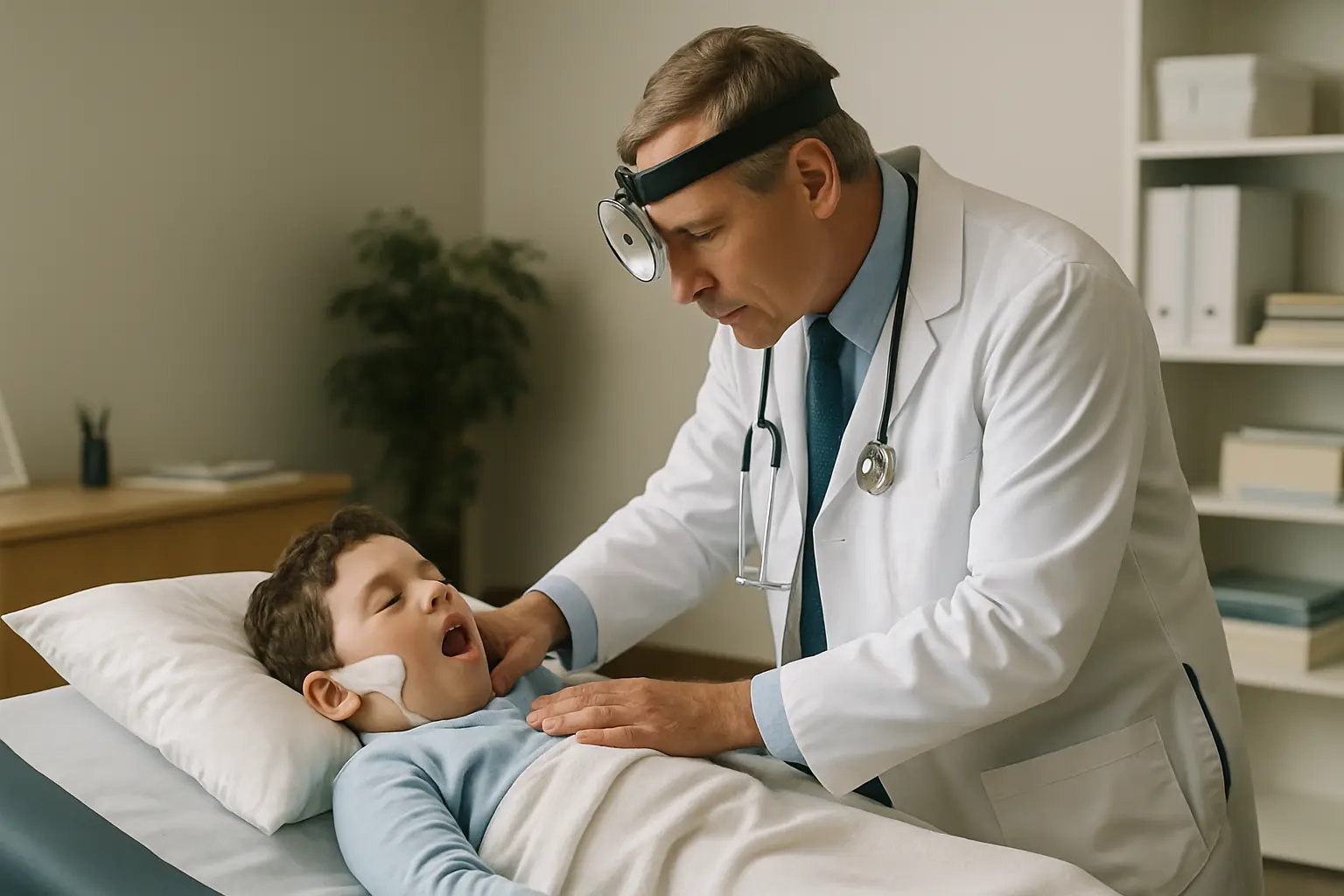Post-tonsillectomy outcomes in children with mucopolysaccharidosis and obstructive sleep apnea
Examining the Impact of Adenotonsillectomy in Children with Mucopolysaccharidosis and Obstructive Sleep Apnea: A Nationwide Analysis

Introduction
Pediatric obstructive sleep apnea (OSA) is among the most common obstructive airway diseases in the pediatric population. The American Academy of Pediatrics (AAP) states that the current prevalence rate of OSA based on level I and II studies ranges from 1.2 to 5.7% in the general population [1]. The prevalence of OSA is significantly higher in patients with underlying neuromuscular conditions and craniofacial anomalies. A study conducted by Gönüldaş et. al. showed a significantly higher incidence of OSA in children with mucopolysaccharidosis (MPS) tested with polysomnography when compared to the general pediatric population [2]. If left untreated, OSA can lead to the development of adverse developmental and health outcomes including learning disabilities, delayed physical growth, disruptive behavior, hyperactivity, adverse metabolic functioning, and cardiovascular complications including hypertension [3,4,5,6,7,8,9,10,11,12,13,14].
MPS refers to a group of inherited metabolic disorders characterized by the deficiency of enzymes required for the breakdown of glycosaminoglycans (GAGs), previously called mucopolysaccharides. The dysfunction or absence of one of these enzymes prevents the degradation of GAGs, resulting in the accumulation of partially degraded GAGs in lysosomes, ultimately causing cellular dysfunction and specific clinical abnormalities [15]. There are seven distinct subtypes of MPS that vary widely based on the affected enzyme and metabolic pathway, resulting in these clinical presentations [16,17,18,19,20,21,22].
The palatine tonsils and the adenoid glands are the most common areas of upper airway obstruction in pediatric patients with OSA [23]. The AAP recognizes adenotonsillectomy (AT) as the first line treatment for pediatric OSA [24,25,26,27]. A combination of adenotonsillar hypertrophy, craniofacial anomalies, low muscle tone, and, in some cases, neurologic abnormalities predispose children with MPS to developing OSA. These factors may also impact the safety and effectiveness of AT in children with MPS. The objective of this study is to describe the incidence of respiratory complications, postoperative hemorrhage, length of stay, and cost of care in children with MPS undergoing AT.
Materials and methods
Data source
The 2016 Healthcare Cost and Utilization Project Kids’ Inpatient Database (HCUP KID) is the largest validated, publicly available all-payer pediatric inpatient care database in the United States. It includes 80% of pediatric (age < 21 years old) discharges from 4200 community hospitals in the United States. The HCUP KID has been produced every 3 years (1997, 2000, 2003, 2006, 2009, 2012), with a delayed release of 2015 data until 2016 because of the complexities of analyzing a mixed data year (2015 contained both ICD-9 and ICD-10 data). The 2016 HCUP KID is composed of ICD-10-CM/PCS data only [28]. This study did not require approval from the office of research integrity at Phoenix Children’s Hospital, as the HCUP KID is a publicly accessible database with de-identified data and is compliant with the Health Insurance Portability and Accountability act.
Outcomes
Separate analyses were performed for race, age, sex, length of stay (reported in days), total charges (U.S. Dollars), and postoperative complications, including post-tonsillectomy hemorrhage and respiratory complications.
Statistical analysis
All analyses were performed with IBM SPSS Statistics Version 29 (SPSS, Inc, an IBM Company, Chicago, Illinois). Comparisons of patient characteristics were performed using a χ2 test or Fisher exact test for categorical variables and a two-tailed independent samples t-test was performed to compare continuous variables. A binary logistic regression model was used to compare odds for postoperative respiratory complications as well as postoperative hemorrhage between patients with and without MPS. Given the difference in sex distribution between groups, sex was introduced as a covariate into the model, but not found to have a significant effect in either regression. Odds ratios were calculated with 95% confidence intervals (95% CI).


